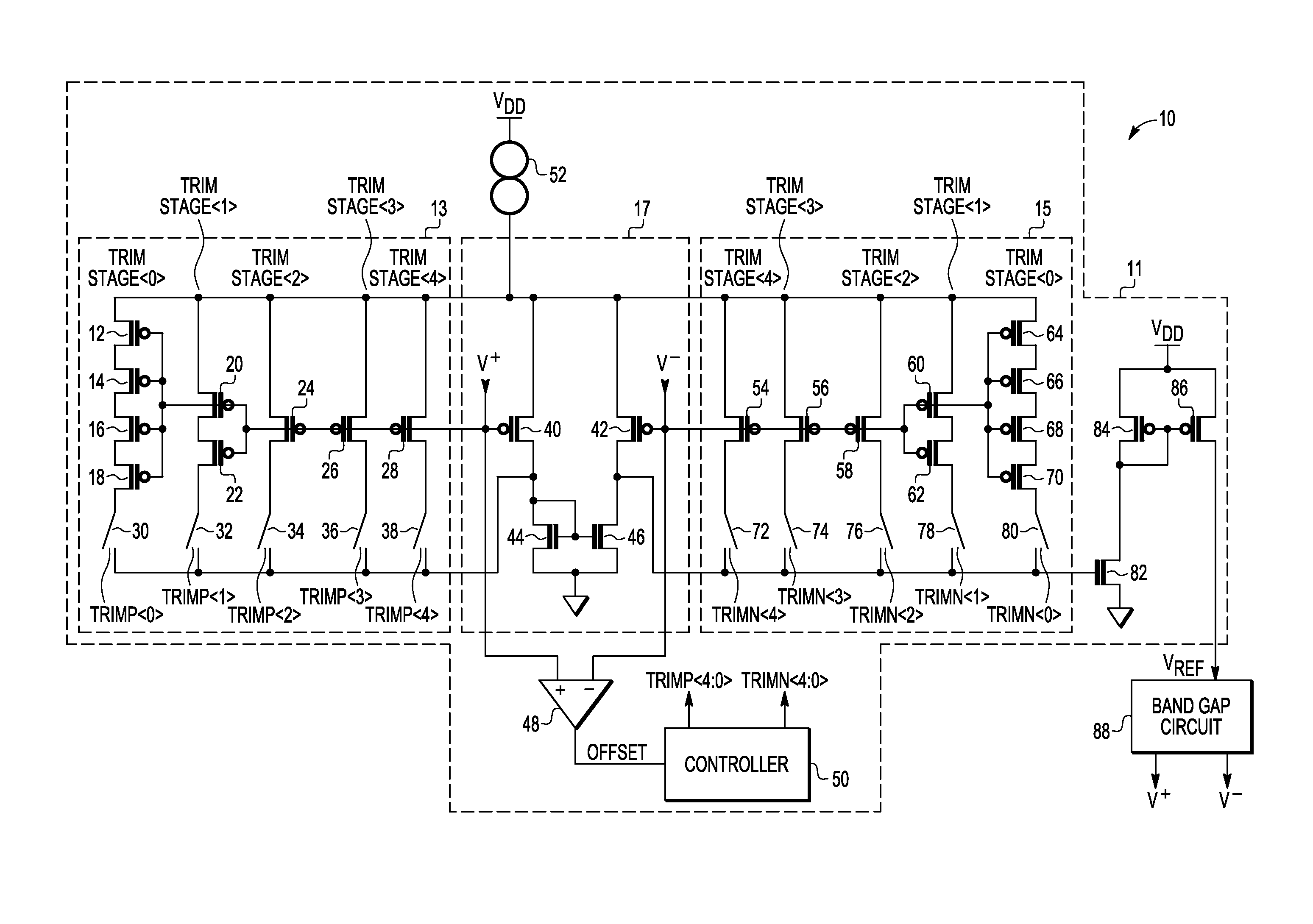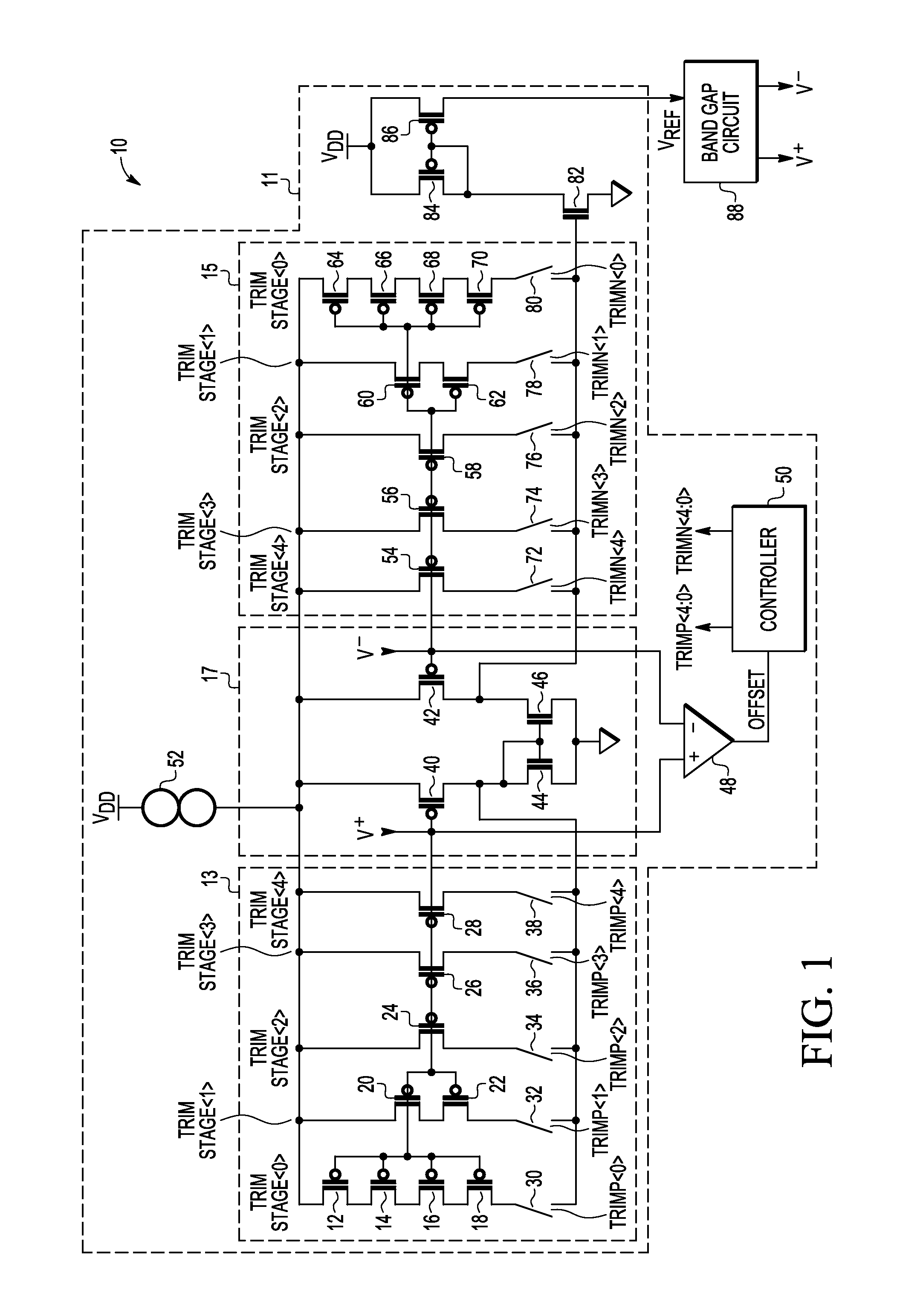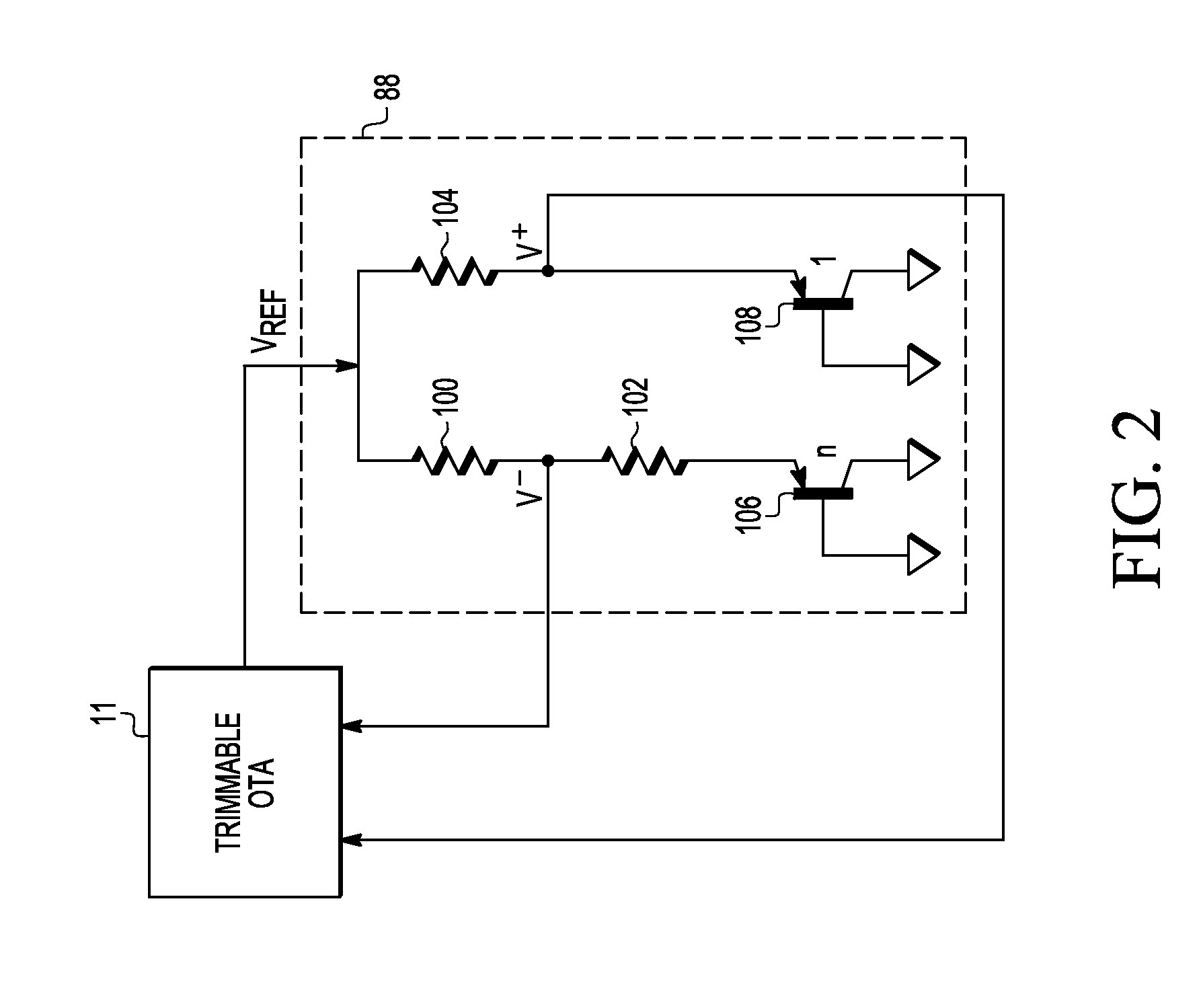Methods and structures for dynamically calibrating reference voltage
a reference voltage and dynamic calibration technology, applied in the direction of electric variable regulation, process and machine control, instruments, etc., can solve the problems of only reading trimming code, error up to 20 mv, and the operating margin of the regulator may not be affected,
- Summary
- Abstract
- Description
- Claims
- Application Information
AI Technical Summary
Benefits of technology
Problems solved by technology
Method used
Image
Examples
Embodiment Construction
[0012]Embodiments of systems and methods disclosed herein use a switched capacitor gain stage to amplify offset at the input of an amplifier. Comparators in the switched capacitor gain stage then determine whether the amplified offset is positive or negative. A counter decrements or increments respective inputs to a differential pair of an operational transconductance amplifier to achieve a negligible amplifier offset. In this way the reference voltage has low impedance. No additional gain stage is required because the band gap system trims itself and achieves minimum variation without the need to retrieve trim data from a storage device such as flash memory even before the reference voltage is available to operate the storage device.
[0013]FIG. 1 illustrates a schematic diagram of an embodiment of a band gap system 10 in accordance with the present invention including a trimmable operational transconductance amplifier (OTA) 11 with trim circuits 13, 15 coupled to respective P-channe...
PUM
 Login to View More
Login to View More Abstract
Description
Claims
Application Information
 Login to View More
Login to View More - R&D
- Intellectual Property
- Life Sciences
- Materials
- Tech Scout
- Unparalleled Data Quality
- Higher Quality Content
- 60% Fewer Hallucinations
Browse by: Latest US Patents, China's latest patents, Technical Efficacy Thesaurus, Application Domain, Technology Topic, Popular Technical Reports.
© 2025 PatSnap. All rights reserved.Legal|Privacy policy|Modern Slavery Act Transparency Statement|Sitemap|About US| Contact US: help@patsnap.com



